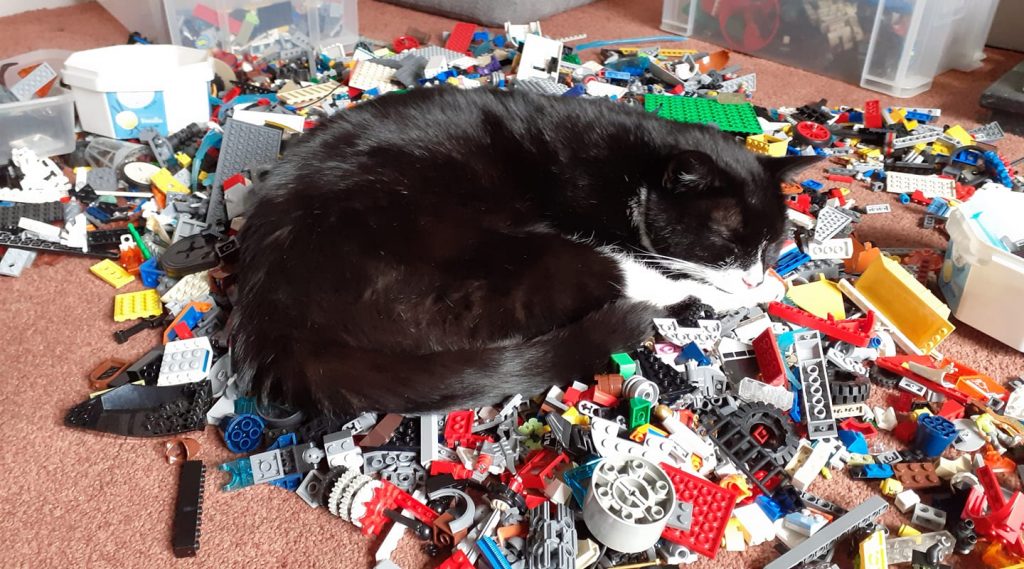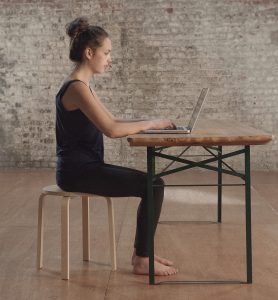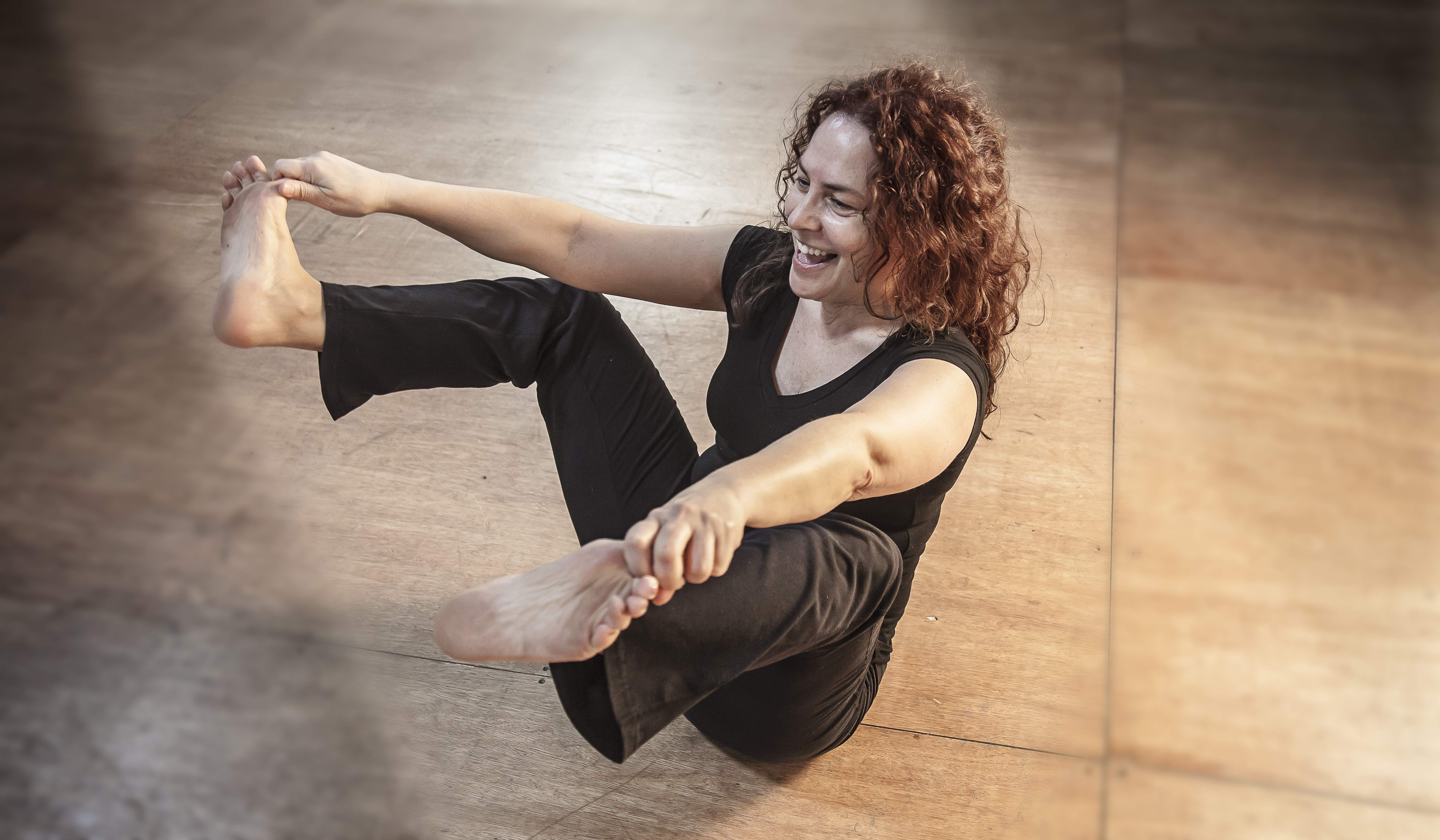By way of an example, have a look at this piece How To Sit Ergonomically At Work. It is a good article, it is mostly accurate, and yet, viewed from a different angle, it is also completely wrong. The wrongness is not necessarily to be found in the suggestions themselves – choose a good chair; take breaks; don’t use a laptop; plant your feet flat on the floor – any one of these ideas on its own might improve your stamina for sitting at your work station, and two or three of these strategies combined could make so much difference to your comfort level that you might bypass the opportunity to make a difference to your ‘self’ instead – and making a permanent difference to the way you organise yourself in sitting might make so much difference that you could become able to sit well, and happily, anywhere you want, for as long as you want.
Sit Like A Cat…
My favourite examples of sitting mastery mostly come from cats. Dogs are more like us, fidgeting around until they feel comfortable enough to relax; cats don’t care – as long as the chosen spot is the right temperature they can relax in all sorts of ridiculous positions.

I can sit easily for quite a long time on most flat surfaces that are not too hard, including the floor. I am by no means a “perfect” specimen, but as I write this I am not getting stiff, my neck and shoulders are not tightening up, my wrists and hands are comfortable as I type, and I will not be getting up from my stool with a groan.
I don’t want to be unfair to the author of the article above; no claim for postural improvement is made, however the whole tone implies that you – even with your amazing, highly sophisticated, astonishingly able human nervous system – cannot expect to sit easily for any protracted length of time, and thus your only option is to “correct” your environment instead.
All of which makes it sound as though sitting well because you know HOW to sit well just isn’t possible – however, if you have been around Feldenkrais teachers for a while you may remember our slogan; that “making the impossible possible, the difficult easy, and the easy elegant” is the fundamental intention embedded in every Feldenkrais lesson.
…a good chair is a good thing…
I do not mean to suggest that the right chair or an adjusted screen position will not be beneficial; clearly if there is any practical action you can take to make your working area more comfortable then it would be very sensible to take it. The argument I intend to make here is that, by selling you a partial explanation of what the deeper issue might be, mainstream thinking lessens the likelihood that you will realise that you have the potential to solve your sitting problems in a more permanent way – a way that could continue to be of benefit to your health for the rest of your life. In fact, sitting with ease on the floor––which will naturally involve you getting down and getting up again on a regular basis––is so good for you it may even actually lengthen your life!
If a chair wobbles then sticking a wedge under the shorter leg may be the only solution; a chair cannot learn from – or adapt to – its environment. A poorly functioning chair can only be mended or discarded. We humans are so utterly unlike devices and machines that we can mend ourselves: we can even install new software and upgrade ourselves – however, and rather sad to say, too many adults have long forgotten how natural and satisfying it can be to expand their abilities to self-organise.
A new way to look at “posture”…
Feldenkrais is a different way of thinking about sitting with ease, and it requires a different way of thinking about posture. Your posture is not something you have make an effort to do right––your posture is what you do when you are not consciously doing anything with, or to, yourself––probably what you are doing right now as you read this.

So, when you notice yourself slumping, shoulders hunched, chest caved in, head poked forward, stop for a moment and notice how truly effortless this posture is for you. You will have regained your own natural poise when a similar moment of spontaneous self-observation reveals that you are sitting lightly balanced on your sitting bones, your shoulders soft and wide, your breathing free and full, with your head and eyes available to look in any direction without your having to adjust yourself first by “sitting up straight”.

I have been searching the internet for pictures of toddlers sitting.

Observe any child in the few short years between learning to sit upright for themselves, and being made to “sit-still-and-pay-attention” in a classroom, and – unless that child has neurological issues – you will see how easily a skull can balance on a spine, how free a neck can be, and how easy it can be to shift between sitting to standing – or sitting and lying – in an effortless way.
As soon as a young child is denied the natural, exploratory, “playful discovery” process of learning organically, and instead introduced to the “look-at-teacher-pay-attention-and-do-as-you’re-told” learning process, that ability to move freely – and to pause gracefully in the middle of doing something and then perhaps switch to doing something else entirely – begins to fall away.
These two films show a group of dancers developing a piece based on the movements of young children – the whole interaction is fascinating to watch…
Moshe Feldenkrais decided the solution to the limitations of our modern education process was to remind adults that they always have access to the power of play; to explore the possibilities for new strategies and creative thinking within the everyday, to replace the authoritative voice of the teacher with the empowering tools of self-awareness, self-observation and ever-maturing self-confidence.
If you are unable to sit with ease on your chair, or the floor, then Feldenkrais may be a good way for you to begin to regain a healthy, flexible sitting posture (maybe you can find a picture of yourself playing on the floor as a toddler and marvel at the ease and length of your neck and spine). There are workshops going on all over the country, and I am offering one-to-one online training sessions if you do not have easy access to a class.
I have also begun to upload small sample movement explorations up on YouTube – my first few videos are focussed on easy breathing in sitting, and are thus a useful approach to beginning the process of learning to sit with more ease – of the three I have posted so far this one is the most relevant:
